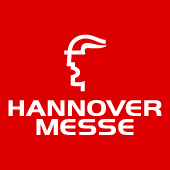IIP-EXTREM: Optimized Patient-Specific Implants
Individualized Implants for the Treatment of Lower Extremities

Although treatment and recovery of bone fractures is a significant part of the Global Burden of Disease, no major advancements on the topic of surgical treatment took place since the 1990s. While 5-10% of such injuries do not heal at all, successful treatment relies heavily on the personal experience of the surgeon yet lacks systematic technological means. The IIP-EXTREM project aimed to provide patients with custom implants specific to the individual tibia and optimized for mechanical properties.
From Image to 3D Model
Routinely performed computer tomography (CT) yields image data sets that can be used for 3D reconstruction. Since a single CT scan requires pixel-accurate identification of materials (cortical bone, cancellous bone, metal, soft tissue) over several hundred images, this results in a lengthy process of manual classification by expert personnel. By utilizing Deep Learning technology, a neural network can classify materials on CT images, thus greatly improving speed and reliability of the image segmentation workflow.
Taking the segmented tomograms, a volume Mesh is constructed using the Marching Cubes algorithm. The resulting model can then be further handled virtually or exported to commonly used object formats used by CAD software.
FEM Simulation
The 3D model is then used in a Finite Element Method Simulation, calculating the influence of pressure on the bone-implant structure in terms of stress and strain. While most solutions utilize generic approaches on CPU clusters, this project deploys a specialized and custom-made FEM approach using Nvidia CUDA that allows for being run on special purpose hardware.
Optimization
Equipped with 3D Models and corresponding FEM simulation results, medical professionals can plan and visualize the individual treatment of a patient, making surgical intervention less invasive and more effective at the same time.
Furthermore, the workflow allows for implants that are tailored to the patient and can be optimized in an iterative approach. This is enabled by a semi-automatic process embedded in a computer assisted surgery (CAS) environment. The custom implant can then be manufactured via selective laser melting or high-speed cutting milling machines.

